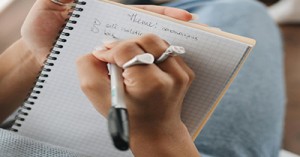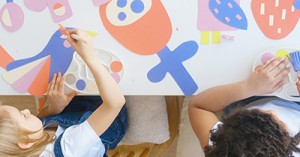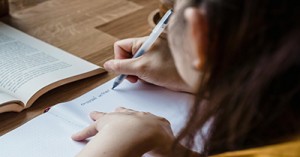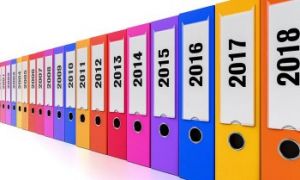This mapping tool is designed to help educators translate everyday moments into meaningful documentation aligned with the EYLF. By spotlighting real examples of children’s play, interactions, and discoveries, it supports reflective practice and strengthens outcome-based planning.
Outcome 1: Children Have a Strong Sense of Identity
Children feel safe, secure, and supported when:
- They confidently explore their environment and initiate play.
- They express their feelings and ideas through words, art, or movement.
- They build relationships with educators and peers, showing trust and belonging.
Examples in Action:
- Greet educators and peers with confidence.
- Choose their own activities and explain their choices.
- Seek comfort from familiar adults when upset.
- Express their likes and dislikes clearly.
- Show pride in their cultural identity (e.g., sharing home language or traditions).
- Take on leadership roles in group play.
- Use personal belongings to feel secure (e.g., a comfort toy or blanket).
- Persist with a task even when it’s challenging.
- Celebrate their achievements with others.
- Show empathy toward peers who are upset or hurt.
Outcome 2: Children Are Connected With and Contribute to Their World
Children show respect and empathy when:
- They participate in group routines and shared responsibilities.
- They care for their environment and living things.
- They engage in cultural practices and community events.
Examples in Action:
- Help set up or clean up shared spaces.
- Care for plants or animals in the environment.
- Participate in cultural celebrations or Acknowledgement of Country.
- Include others in play, especially new or shy children.
- Use respectful language and gestures.
- Share resources and take turns.
- Show concern for fairness and justice in play.
- Participate in community walks or excursions.
- Create artwork inspired by their community or culture.
- Discuss sustainability (e.g., “We turn off the lights to save power”).
Outcome 3: Children Have a Strong Sense of Wellbeing
Children develop resilience and physical confidence when:
- They take risks in active play and manage challenges.
- They express emotions constructively and seek help when needed.
- They practice self-care and hygiene routines.
Examples in Action:
- Climb, jump, balance, and run with confidence.
- Attempt new physical challenges (e.g., riding a bike).
- Express emotions using words or art.
- Use calming strategies (e.g., breathing, quiet space).
- Wash hands and follow hygiene routines independently.
- Choose healthy foods and talk about nutrition.
- Ask for help when needed.
- Show resilience after a fall or mistake.
- Rest when tired and recognize their body’s needs.
- Respect others’ personal space and boundaries.
Outcome 4: Children Are Confident and Involved Learners
Children explore and investigate when:
- They ask questions, make predictions, and test ideas.
- They use tools, materials, and technologies creatively.
- They persist through challenges and reflect on outcomes.
Examples in Action:
- Ask “why” and “how” questions during play.
- Build and test structures with blocks or loose parts.
- Use trial and error to solve puzzles.
- Explore cause and effect (e.g., water play, magnets).
- Create patterns or sequences with materials.
- Use digital tools to document or extend learning.
- Revisit and refine their work (e.g., drawings, constructions).
- Engage in long-term projects or investigations.
- Make predictions and test them (e.g., “Will it float?”).
- Use imagination to create new games or stories.
Outcome 5: Children Are Effective Communicators
Children express themselves through multiple modes when:
- They engage in storytelling, drawing, and dramatic play.
- They use symbols, signs, and print meaningfully.
- They listen actively and respond to others.
Examples in Action:
- Engage in storytelling or role-play.
- Use drawing, painting, or sculpture to share ideas.
- Recognize and use symbols (e.g., signs, letters).
- Sing songs and recite rhymes.
- Use digital media to create or share stories.
- Listen to others and respond appropriately.
- Use home language and English to communicate.
- Explore books independently or with others.
- Create their own books or signs.
- Use gestures, facial expressions, or props to enhance communication
Whether you're capturing spontaneous learning, planning intentional experiences, or scaffolding developmental progress, this tool offers clear pathways to link observations with EYLF outcomes—while honouring each child’s voice, identity, and journey.
Use it to:
- Identify which EYLF outcomes are reflected in your observations.
- Enrich your documentation with outcome-aligned language.
- Support team reflection and planning.
- Communicate learning clearly to families and communities.
Let’s make the EYLF visible, vibrant, and deeply connected to the everyday magic of early learning.
Further Reading
EYLF Outcomes In Action Posters
Free EYLF Version 2.0 Posters and Cheat Sheets
EYLF Learning Outcomes Version 2.0
Practical Examples Of EYLF Outcomes
Linking Theories To The EYLF







 Here is the list of the EYLF Learning Outcomes that you can use as a guide or reference for your documentation and planning. The EYLF
Here is the list of the EYLF Learning Outcomes that you can use as a guide or reference for your documentation and planning. The EYLF The EYLF is a guide which consists of Principles, Practices and 5 main Learning Outcomes along with each of their sub outcomes, based on identity,
The EYLF is a guide which consists of Principles, Practices and 5 main Learning Outcomes along with each of their sub outcomes, based on identity, This is a guide on How to Write a Learning Story. It provides information on What Is A Learning Story, Writing A Learning Story, Sample
This is a guide on How to Write a Learning Story. It provides information on What Is A Learning Story, Writing A Learning Story, Sample One of the most important types of documentation methods that educators needs to be familiar with are “observations”. Observations are crucial for all early childhood
One of the most important types of documentation methods that educators needs to be familiar with are “observations”. Observations are crucial for all early childhood To support children achieve learning outcomes from the EYLF Framework, the following list gives educators examples of how to promote children's learning in each individual
To support children achieve learning outcomes from the EYLF Framework, the following list gives educators examples of how to promote children's learning in each individual Reflective practice is learning from everyday situations and issues and concerns that arise which form part of our daily routine while working in an early
Reflective practice is learning from everyday situations and issues and concerns that arise which form part of our daily routine while working in an early Within Australia, Programming and Planning is reflected and supported by the Early Years Learning Framework. Educators within early childhood settings, use the EYLF to guide
Within Australia, Programming and Planning is reflected and supported by the Early Years Learning Framework. Educators within early childhood settings, use the EYLF to guide When observing children, it's important that we use a range of different observation methods from running records, learning stories to photographs and work samples. Using
When observing children, it's important that we use a range of different observation methods from running records, learning stories to photographs and work samples. Using This is a guide for educators on what to observe under each sub learning outcome from the EYLF Framework, when a child is engaged in
This is a guide for educators on what to observe under each sub learning outcome from the EYLF Framework, when a child is engaged in The Early Years Learning Framework describes the curriculum as “all the interactions, experiences, activities, routines and events, planned and unplanned, that occur in an environment
The Early Years Learning Framework describes the curriculum as “all the interactions, experiences, activities, routines and events, planned and unplanned, that occur in an environment


